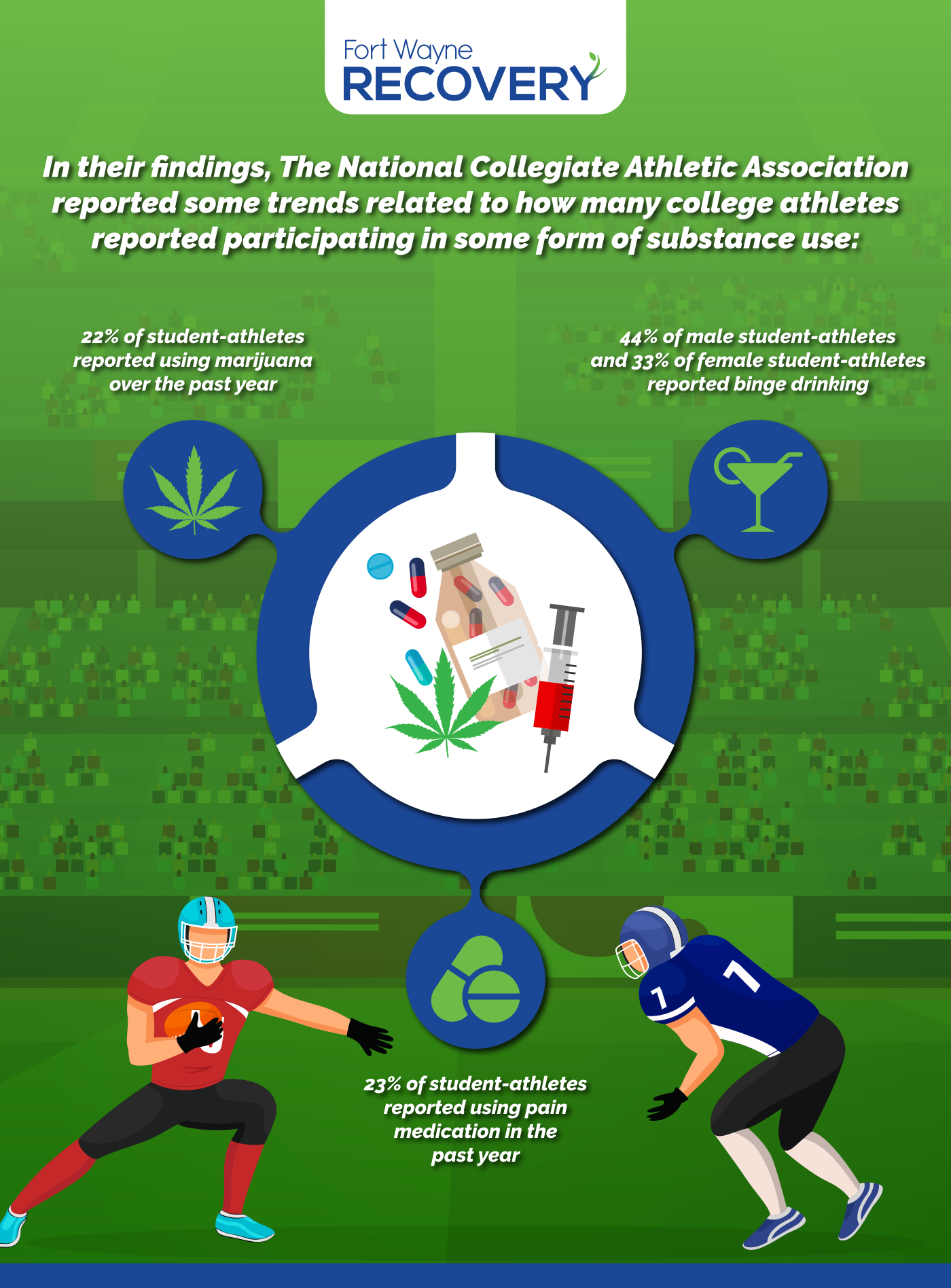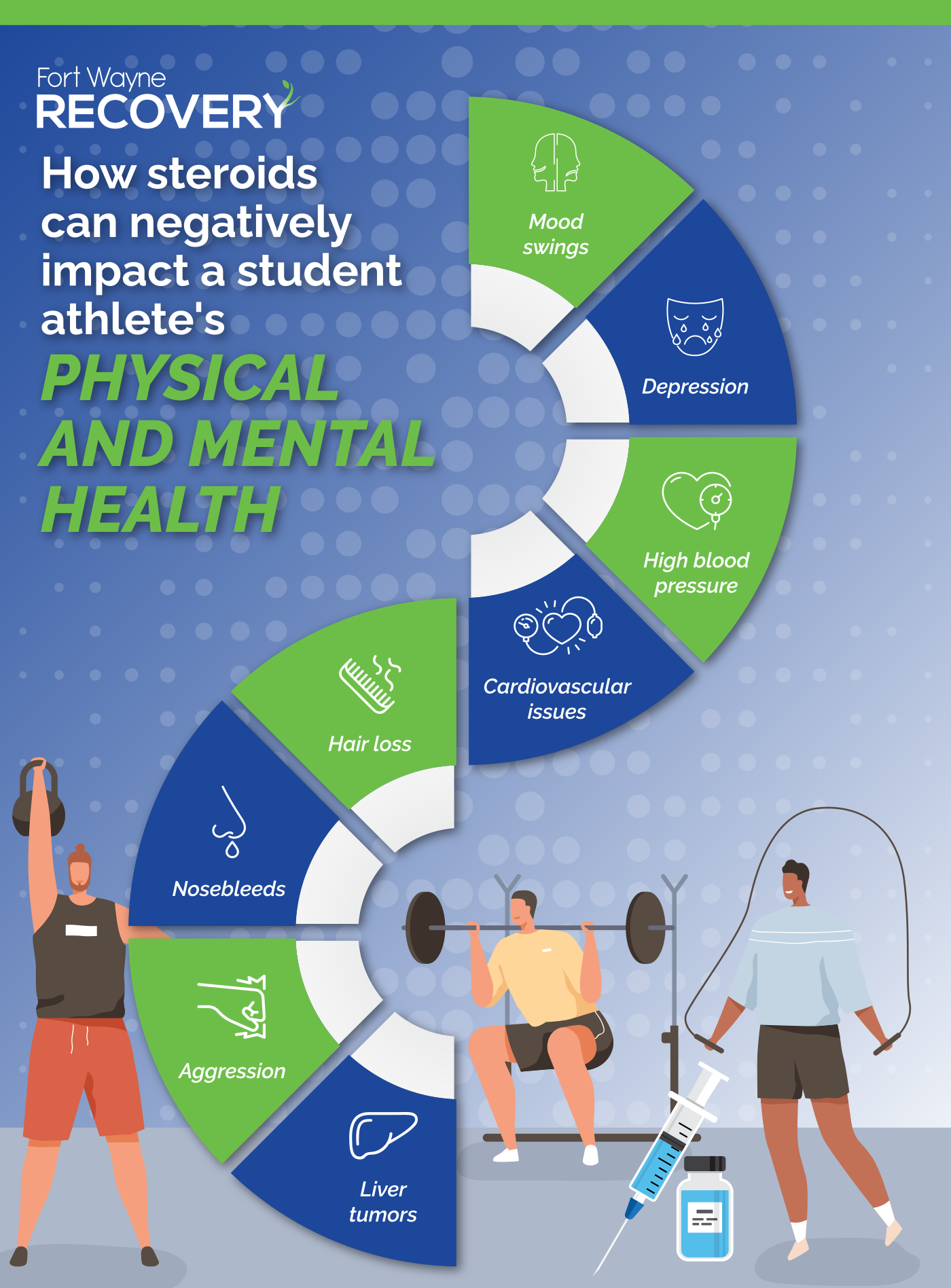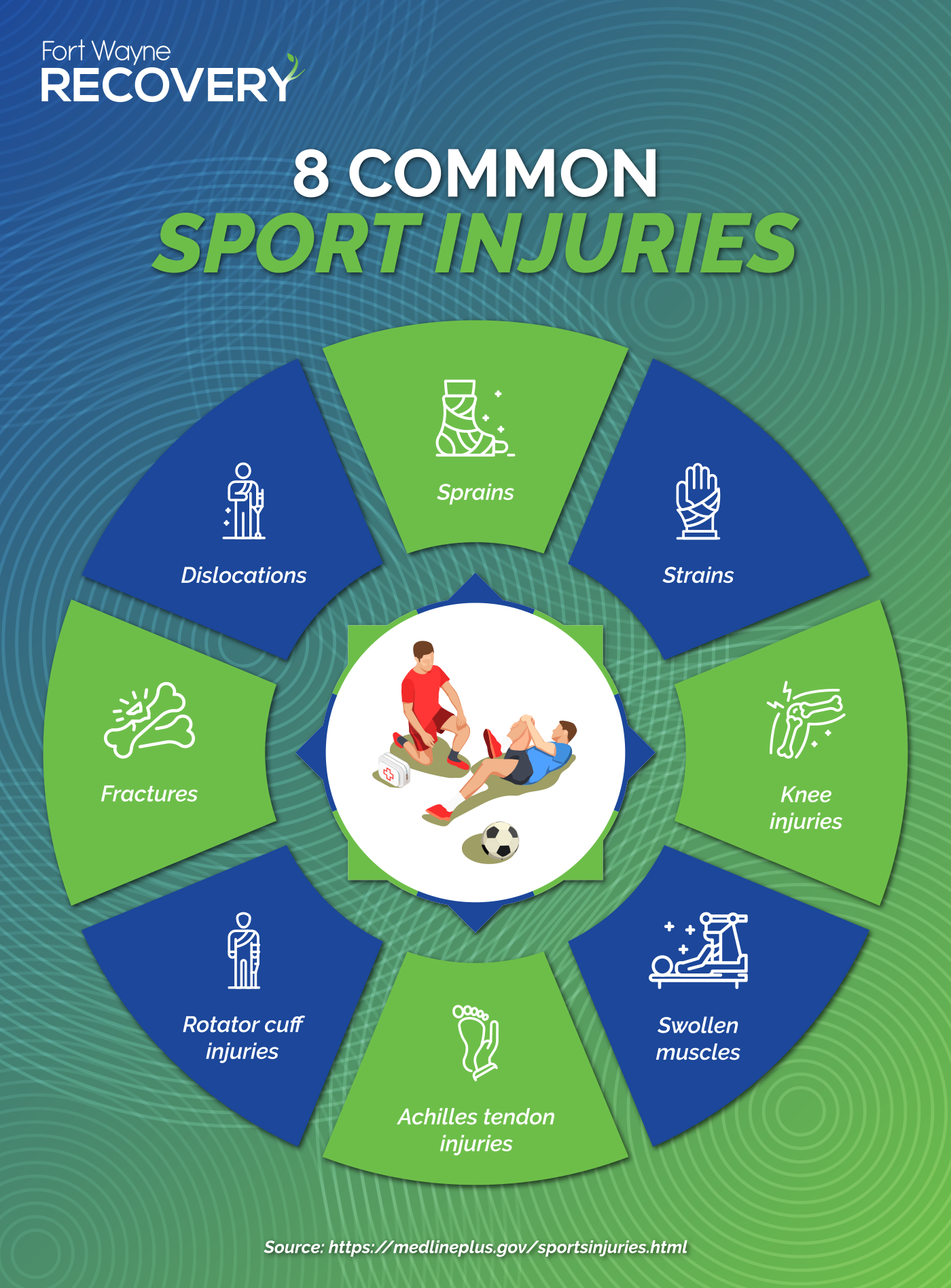Time Out: The Connection Between Student-Athletes And Substance Abuse
Time Out: The Connection Between Student-Athletes And Substance Abuse
For many students participating in athletics is a positive experience that helps them to stay focused on their academics and can provide them with opportunities such as college scholarships. But for some athletes, it can lead to substance abuse issues.
50%
More likely to misuse prescription stimulants like opioids in the decade after they graduate.
A recent study found that high school seniors who play contact sports are about 50% more likely to misuse prescription stimulants like opioids in the decade after they graduate. High school athletes have also been identified as a high-risk group to participate in heavy drinking versus non-athletes.
Multiple things are contributing to these risky behaviors and understanding them can help coaches and family members identify students who may struggle with substance abuse issues.

Performance-Driven
Substance Abuse
Performance-Driven Substance Abuse
Even as early as high school, some athletes may feel the need to turn to steroids or other performance-enhancing substances to help them “do what it takes” to be a star athlete on the football field or the basketball court. While steroids can provide athletes with an extra boost, they can also become easily addicted to them without realizing it. Unlike other prescription drugs like opiates, steroids don’t provide the same euphoric effect so student-athletes may think they’re not as addictive. Unfortunately, steroids are addictive and can cause a variety of issues including hair loss, aggression and fertility problems.
Adderall is another substance that has risen in popularity among high school and college athletes due to its accessibility since it’s commonly used to treat ADHD.
The prescription substance makes it easier for students to focus and like other stimulants such as cocaine or methamphetamines, provides the athlete with an extra burst of energy helping them get through a grueling practice or an upcoming game. However, when it’s misused it can lead to medical complications including trips to the emergency room.
The pressure to maintain a high level of success may also cause school athletes to partake in episodes of heavy drinking. According to a study conducted by the NCAA, student-athletes have higher rates of binge drinking compared to non-athlete students. Many athletes say this in part to accommodate a work-hard-play-hard mentality that is commonplace among school athletes.

The pressure to maintain a high level of success may also cause school athletes to partake in episodes of heavy drinking. According to a study conducted by the NCAA, student-athletes have higher rates of binge drinking compared to non-athlete students. Many athletes say this in part to accommodate a work-hard-play-hard mentality that is commonplace among school athletes.
Injuries and sports go hand and hand as 90% of student-athletes report experiencing some type of injury while participating in sports activities. Moderate and severe injuries are often treated with prescription painkillers like opiates which can be highly addictive.
This was the case for Nate Moellering, a community outreach coordinator at Allendale Treatment and Fort Wayne Recovery who says that injuries he sustained playing high school and college football led to his substance abuse issues.
“I played football in high school and college and I blew out my shoulder three years in a row and also injured my back and that’s how I got started on opiates,” says Moellering. “The first time that I was prescribed and I took a Percocet – it was like I had found God and I didn’t want for that feeling to go away.”
A study, conducted with middle and high school students, found that by the time high school athletes became seniors, male athletes were twice as likely to be prescribed painkillers over the prior year and were four times more likely to misuse painkillers compared to males who did not participate in competitive sports.
“The first time that was prescribed and I took a Percocet – it was like I had found God and I didn’t want for that feeling to go away.”
“The first time that was prescribed and I took a Percocet – it was like I had found God and I didn’t want for that feeling to go away.”
Prescription opiates can be a slippery slope for athletes who undergo multiple surgeries or experience various injuries over the years and this can lead to them seeking out harder drugs down the road. About 80% of people who use heroin say they used and abused prescription opioids first.
Moellering says that he turned to heroin once his doctor’s stopped prescribing him opioids and that’s when his college football career ended.
“I tried to play football again but I was strung out so I checked myself into a local rehabilitation center instead.”
Nate Moellering, Community Outreach at Fort Wayne Recovery
Self-Medicating to Mask Other Issues
When athletes abuse substances whether it’s drugs or alcohol, it’s usually to cope with behavioral health issues going on such as anxiety, depression, or an eating disorder. It can also be driven by a desire to fit in with their peers.
Tommy Streeter, a community outreach coordinator for Allendale Treatment and Fort Wayne Recovery says that one of the main reasons he started to experiment with drugs was due to self-esteem issues and a desire to fit in. “My addiction started when I was a young man. I felt different than everyone else and had low self-esteem and social anxiety,” says Streeter. “Since I didn’t have the language yet to tell people how I felt, I started experimenting with drugs instead.”

When mental health issues go untreated, it’s easy for teenagers to try to self-medicate to help them cope with their feelings. “People with substance abuse issues typically already have underlying mental health issues before they start using,” says Moellering. “Something inside of them is already broken and at least in the beginning, substances can quiet those feelings they’re struggling with.”
Looking Past Steriotypes
Even if a student-athlete starts displaying symptoms of substance abuse, it can be difficult for their teammates or family to realize it because they don’t look like “the typical drug user”. “There’s a preconceived image of what someone struggling with an addiction looks like and it’s often someone who is a criminal and has done terrible things,” says Moellering. “The truth is that anyone can be an addict including doctors, lawyers, CEOs and athletes. Addiction doesn’t discriminate and the sooner someone can go to a detox or rehabilitation facility, the sooner they’ll be able to turn their life around.”
While the connection might not be obvious, the pressure to maintain a high level of performance and success can be a driving factor in substance abuse disorders among young athletes. And with the prevalence of performance-enhancing substances like steroids and opioids for pain management surrounding them, they are at an increased risk of developing an addiction.

